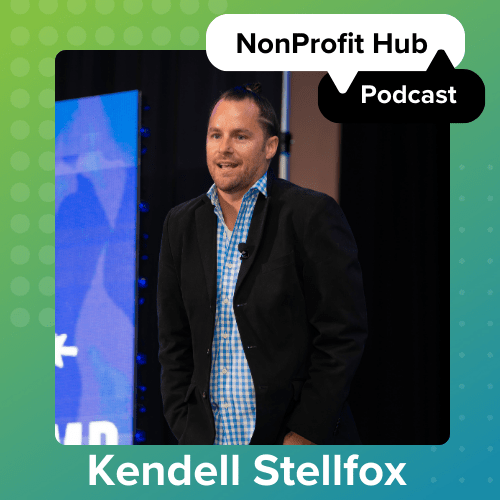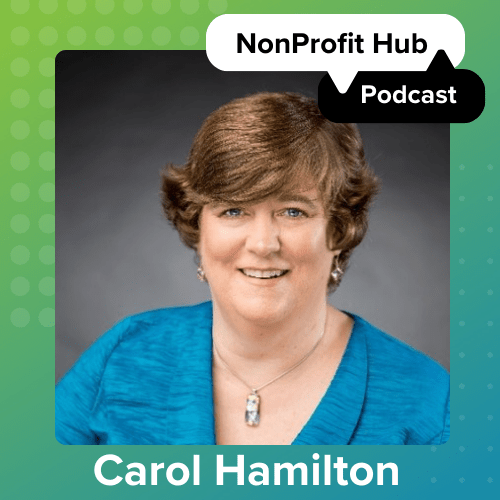Getting noticed is a challenge. The internet is a busy, crowded place, buzzing with almost 2 billion websites and millions of brands competing for attention. Rising above the clutter and online noise requires a little strategy. Thankfully, that strategy doesn’t require a rocket scientist. Or even a computer scientist. You can create website content that will boost your nonprofit’s site in search results and put it on people’s radar without a degree in copywriting or any technical expertise. That’s why we wrote this—to give you the need-to-knows about how to write for SEO and rank on Google. This will empower you to optimize your site for search.
Ready to get in good with Google and watch your website rise? Let’s start with the basics.
What is SEO?
SEO is the practice of optimizing your website’s content and technical elements to make your site attractive to search engines. The goal is to get your site to appear near the top of the search engine results page (SERP) organically, meaning you aren’t paying for ad space.
Studies indicate that 71.33% of the time, searchers will click on one of the first ten organic links on Google’s first page (Zero Limit Web). This means capturing a spot on that first page will be pretty important for your organization. But, how do you know what your organization should rank for?
Conduct keyword research.
Too many times nonprofits bypass this stage and go straight to writing content. That’s like skipping class all year and expecting to ace your final exam. Do not waste your time creating content that nobody is searching for.
Keyword research is the best way to uncover what your audience wants. To begin compiling your list of keywords start here:
- Think like a searcher, not like an insider. If a new pet owner wants to get their kitten spayed, they’re not going to search for a vet to do an “ovariohysterectomy.” Instead, they’re going to use layman’s language. “Get my cat fixed” or “veterinarian to spay my cat” or something similar. We all use insider terms at work, but those rarely make good keywords. Think about what words your potential donors, volunteers or supporters might use to search for the services your organization provides.
- Always include your location. If I live in Nebraska, I’m not going to fly to Oregon to adopt a dog. So, I might search for “dogs for adoption in Lincoln” to narrow my search and find my new friend close to home. If you serve a local community, like an animal shelter would, be sure to include your location throughout your web pages.
- Look at your competitors. Others in your sector or space are doing the same kind of keyword research and trying to write their web content for SEO too. So, take a peek at their websites—what words are they using? How do they
describe their services? Pay attention to what your competitors are doing and consider prioritizing the keywords they’re ranking for to aggressively compete with them.
Craft the perfect headline and supporting subheads.
People read differently on the web than they do on paper. In fact, they don’t really “read”—they scan. They want to spot the information that’s most relevant to their interests or needs, and then take a deeper dive into the content when they spot something interesting.
The second reason, of course, is for SEO. Google pays close attention to your headlines and subheads, and it’s smart to write them in a way that’s search engine-friendly.
To start, let’s talk about your main headline on a page, or the <h1> tag. Think of this as the title of a book. There have been plenty of trends in SEO that have come and gone, but <h1>s have never lost their significance—they play a key role in SEO success. Use these best practice tips to write <h1>s that work:
- Use only one <h1> tag per page.
- Include your target keyword or keyword phrase.
- Stick to just 6–7 words and/or less than 65 characters.
- Give a strong sense of what the content is about.
- Use relevant adjectives.
- Consider using the year if it’s relevant to your article.
Earn quality backlinks.
According to SEO expert Neil Patel, “Backlinks are the building blocks of your webpage. They tell Google that you’re connected and sociable and that you’ve got useful content that people can access. This content could be your own or it could be from another author or site.”
Page links, in general, are good; backlinks (or inbound links) are SEO gold.
What is a backlink? In basic terms, it’s when another website links to the content on your site.
This is important because it says to both Google and your online audience, “We’re trustworthy. We know what we’re talking about. We have useful information.” It’s basically a vote of confidence. Plus, it’s one more driver to your website, and can’t we all use that? To mine this SEO gold, there are three key things you can do:
- Link to relevant content within and outside your site. You want other websites to link to yours? Be a good internet neighbor, then, and link to other websites when it’s appropriate, relevant and valuable for your audience. Also, linking to other pages within your website is good SEO juice, too.
- Aim for high-quality backlinks. The quality of your backlinks is more important than the quantity. Backlinks from trustworthy, high-authority sites are the ones you really want to earn, while backlinks from low-authority, potentially spammy sites fall into the category of “yeah, that’s not helpful.” Pro tip: Guest blogging is one of the most effective ways to earn quality backlinks.
- Write great content and promote it. This might seem obvious, but it’s worth saying: You can earn high-quality links by creating unique content that people want to link to. This means you need to invest some time and money into creating quality content, but there are so many wins associated with good quality content, that investment is typically worth it. Once you’ve got the goods, get your content in front of influencers through email, social or simply picking up the phone, and ask them to link from their website to your content, and voila, you’ve got yourself some backlinks.
Are you still with me? Great, because I’ve got more tips for you! Conducting keyword research, crafting the perfect headlines and earning quality backlinks are oh-so-important steps. But to earn a space in the coveted top 10 and to share your mission with as many people as possible, you’ll want to do a little bit more SEO.
Download Firespring’s how to write for SEO ebook, “Writing for SEO: How to Create Content to Engage Your Audience and Rank on Google.” Our SEO experts and copywriters will take you behind the scenes of creating website content that will not only resonate with your online audience but get you in good with Google and other search engines as well. If you are looking to hire a SEO consultant, read this post about how to find a volunteer SEO specialist.
Author Bio:
Angie Kubicek is a strategic, multidisciplinary marketing professional with an eye for innovation. Her diverse experience with notable companies like Smart Chicken, Hayneedle, Yahoo!, Bailey Lauerman and Complete Nutrition, gave her unique opportunities to experience both client and agency workflows. Skill sets include
media strategy, UX, social media, branding, content creation and PR. As Chief Marketing Officer at Firespring, Angie combines knowledge & experience, delivering creative solutions to clients and their audiences.






